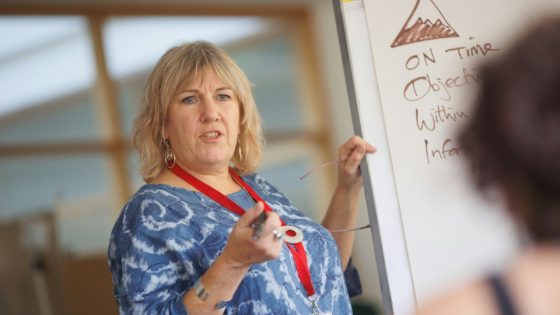By Rebecca Garside, SENCO and Curriculum Leader, Lewis Charlton Learning Centre, Director at Inclusion Infusion and Co-Director at Sunflower Education CIC
Special educational need coordinators (SENCOs) have played a key role in our schools for many years now, helping special educational need and disability (SEND) students to learn, grow and develop.
In my experience at Lewis Charlton Learning Centres, helping SEND pupils learn has been achieved through manual, in-person practices and techniques. Staff would support students in the class to complete tasks, liaise with teachers and update parents on their progress. At the same time, students would be grouped together so that, for example, if a SEND pupil was struggling with reading someone was always there to read to them.
However, these ways of working were drastically altered due to the emergence of COVID-19. The pandemic forced pupils to learn and work virtually from home, including those with educational needs. This meant that our SEND students were unable to have access to the usual support they would receive from their SENCOs and the classroom, such as having staff or a classmate read to them, impacting their education and ability to learn.
Without access to traditional support methods, we as SENCOs had to adapt to ensure we were providing for our students. For me, this required learning about new systems and platforms that I had never engaged with before. However, once I got to grips with the solutions I immediately realised the benefits they could bring to my pupils.
What about the SEND review?
The launch of the government’s long-awaited SEND green paper at the end of March set out the vision to improve provision for children with special educational needs and disabilities. Along with plans for a simplified EHCP process and improved inclusivity across mainstream schools it also called for better and earlier identification and intervention and support of needs.
But like many in my position, I’m frustrated that this review has taken too long and the lack of clarity it gave. Many schools are at breaking point with too many children to support and not enough help to do it. There is no mention of intersectionality or tangibly what support schools can expect to receive. An overarching figure of what will be ploughed in overall doesn’t allow schools to see what provision, support, funding or training they themselves will get as part of it.
While we continue to wait for the full implementation of the Green Paper, SENCOs will have to continue to adapt and utilise innovation and embrace assistive technology. We have a big role to play in helping students find independence in their support, while helping them to build their own sense of success.
Learning support technologies have a role to play
At Lewis Charlton Learning Centres I’ve been trialling the OrCam Learn. This is an AI-enabled solution to learning that has interactive reading, comprehension assessment, analytics and reports which partners with students as they read and learn; developing comprehension, fluency and confidence. This tool means we can instantly remove many challenges for our pupils in and out of the classroom, empowering them to overcome any limitation by providing them with access to the support they need to unlock their full potential. We can also give them more freedom and independence to learn without a SENCO or fellow classmate being available.
With so much technology being available and forced upon us, the role of the SENCO is no doubt changing. We are no longer just there to teach and develop skills, we are also installing new solutions, explaining how to operate new platforms and finding innovations that could help our pupils flourish.
But technology cannot be adopted in isolation, we also need an education system, training and development programme that reflects these changes.
SENCOs need to know what technologies are out there for pupils, and how to use them. This is not only to benefit students but also SENCOs themselves. Underfunding and a lack of staff and inclusivity can see many struggling to be able to provide students with the attention and support they need, which is why I have set up an organisation to help address these issues, Inclusion Infusion. Providing them with tools to work and grow independently could be key in helping alleviate this, ensuring SENCOs can provide the best education for everyone.
Technology has changed many roles in different sectors and now, thanks to the pandemic, we are seeing this take place for SENCOs. While it’s encouraging that the government is putting more focus on SEND provision, our students today cannot wait for these changes to be implemented. We need to accept that we must embrace innovation and new ways of working so we can create a better and freer education system for SEND students everywhere.






Leave a Reply